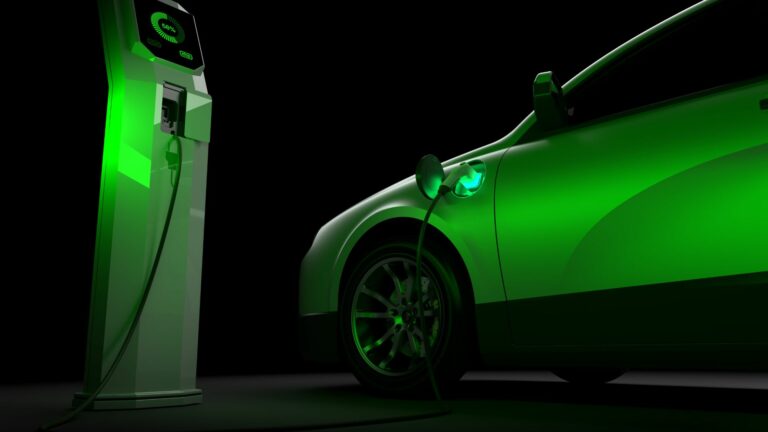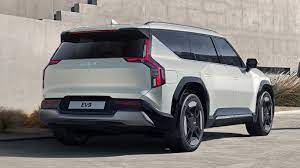Attention! These advancements in automotive safety could save your life

Automotive safety has seen incredible advancements in recent years, focusing on reducing accidents and improving the driving experience. With the integration of advanced technologies, modern vehicles have not only become safer but also more comfortable. Below, we will explore the most recent advancements in automotive safety and how they are transforming the way we drive and perceive driving.
SUMMARY:
| main ideas | additional details |
|---|---|
| 🚗 Advancements in automotive safety | Reducing accidents and improving the driving experience with advanced technologies. |
| 🔍 Use of Lidar | Mapping the environment in real-time to detect obstacles and enhance safety. |
| 🛡️ Interior sensors | Monitoring the emotional and vital state of the driver to reduce risks. |
| 📷 360-degree vision | Incorporating cameras and sensors for a complete view, facilitating maneuvers and parking. |
| 🤖 Autonomous driving | Navigating and reacting with minimal human intervention thanks to 5G and advanced technology. |
Lidar, the laser radar to anticipate road obstacles
One of the most impressive advancements in automotive safety is the use of Lidar. This detection and ranging system uses lasers to map a vehicle’s environment in real-time, providing a precise and detailed view that surpasses human vision.
The Lidar can detect pedestrians, other vehicles, and obstacles on the road, even in low visibility conditions such as darkness or fog. This allows for proactive action, significantly improving road safety.
In addition to Lidar, other advanced technologies include :
- Automatic emergency braking systems that stop the vehicle to avoid collisions.
- Adaptive cruise control (ACC) maintains a safe distance between vehicles, braking automatically if necessary.
- Traffic sign recognition, which alerts the driver in case of a traffic regulation infraction.
These innovations are crucial for the future development of autonomous vehicles, which rely on a combination of sensors, radars, cameras, and Lidar to navigate and react to their surroundings. The Society of Automotive Engineers (SAE) classifies autonomous vehicles into various levels of autonomy, from 1 to 5, with the latter being fully autonomous.
Interior sensors to understand the driver’s mood
Another significant advancement is the development of interior sensors that monitor the vital signs and emotional state of the driver. These sensors can detect signs of drowsiness, stress, or anger, reducing the risk of accidents by suggesting stops to rest or adjusting the vehicle’s environment to calm the driver.
Volvo, for example, implements interior sensors that monitor biometrics of the driver, signaling when they detect states of drowsiness, stress, or anger. These systems are part of an emerging trend that seeks to humanize automotive technology, making vehicles respond not only to the external environment but also to the internal state of those who drive them.
The use of these sensors is also complemented by other technologies :
- Car mode, which deactivates smartphone functions to avoid distractions.
- Lane-keeping assistance, which alerts if there is an unintentional lane departure.
- Predictive emergency braking systems that alert and brake automatically to prevent collisions.
These smart technologies not only enhance the safety of the driver but also of passengers and pedestrians. Monitoring the driver’s mood and adapting the vehicle’s response accordingly is a significant step toward safer and more personalized driving.
Cameras and sensors for 360-degree vision
In the quest for greater safety, manufacturers are incorporating cameras and sensors that provide a complete 360-degree view of the vehicle’s environment. This technology is essential for tasks such as parking, where limited visibility can lead to accidents.
For example, systems like Cross Traffic Alert and 360-degree parking assist facilitate parking and maneuvers in congested urban environments. These systems utilize multiple cameras and sensors to offer a panoramic view of the vehicle, detecting any obstacles in its path.
In addition to facilitating parking, night vision cameras enhance safety by providing clear images of the environment during the night using infrared technology. This technology is especially useful in rural or poorly lit areas where visibility is a significant concern.
Below is a list of other technologies based on cameras and sensors :
- Blind spot assistants, which alert of vehicles in the blind spot of the mirror.
- Cameras that monitor the car’s position and alert if there is an unintentional lane departure.
- Night vision systems with infrared and cameras to improve visibility.
These technologies not only increase vehicle safety but also enhance the driver’s confidence by providing a more complete and detailed view of their surroundings.
Systems that bring us closer to autonomous driving
Autonomous driving is one of the biggest promises of current automotive technology. These systems, supported by advanced sensors, radars, Lidar, and cameras, allow vehicles to navigate and react to their environment with minimal human intervention.
One of the major enablers of autonomous driving is 5G connectivity, which allows for fast data transfer and low latency, critical for vehicle reaction time. 5G technology is transforming traffic, improving efficiency and reducing pollution.
Autonomous vehicles are classified into levels of autonomy according to the SAE, ranging from level 1 (partial assistance functions) to level 5 (fully autonomous). These vehicles promise not only to enhance safety and reduce accidents but also to offer economic and mobility benefits.
| Level of autonomy | Description |
|---|---|
| Level 1 | Partial assistance to the driver |
| Level 2 | Partial automation (speed and steering control) |
| Level 3 | Conditional automation (the vehicle takes control under certain conditions) |
| Level 4 | High automation (the vehicle operates autonomously in most situations) |
| Level 5 | Full automation (no need for human intervention) |
The advancement in hardware and software is crucial for the development of autonomous driving. Autonomous vehicles include central computers, Lidar scanners, vision cameras, ultrasonic sensors, GPS, and IMU, microphones, and interior sensors. The software is based on artificial intelligence, neural networks, machine learning, and computer vision.
In my experience as a car and technology enthusiast, I have seen how these advancements are revolutionizing the way we drive. Autonomous driving systems are not only changing mobility but also the very concept of road safety.
The implementation of adapted infrastructure, such as smart roads and 5G networks, is crucial for the success of autonomous driving. Additionally, investment in research and the challenges of cybersecurity are essential to ensure a safe and efficient future on our roads.
Elements that make up the passive safety of our car
Passive safety remains an essential component in protecting vehicle occupants in the event of an accident. These systems are designed to minimize injuries and protect passengers when an accident occurs.
Key elements of passive safety include :
- Chassis and body designed to absorb impacts and protect occupants.
- Pedestrian protection systems.
- Seat belts and child restraint systems.
- Airbags to minimize injuries in case of collision.
- Fuel cut-off systems that prevent fires.
My interest in design and mechanics leads me to especially appreciate advancements in passive safety. These elements not only focus on vehicle passengers but also on pedestrians and other road users.
Advanced systems like eCall, an emergency call system, improve the response of medical services in the event of an accident, allowing for quicker and more effective intervention. Other systems include emergency braking assistance and systems that monitor the vital signs of the driver, alerting if anomalies are detected.
With the development of automotive technologies, it is expected that after 2025 we will see fully automated systems that will take passive safety to even higher levels. The evolution of technologies like electronic stability systems, which adjust the speed of each wheel to prevent skids, is proof of this.
Finally, we cannot overlook the implications of implementing autonomous vehicles. These changes will affect road safety, legal responsibilities, and data processing, also raising ethical questions. Nevertheless, reducing human errors in driving and the rise of electric vehicles promise to drastically decrease accidents and associated costs.
For more details on technological innovations in the development of automotive catalysts and other innovations in the sector, stay tuned for future publications. Join us in this fascinating evolution of automotive safety and technology.





